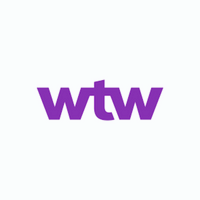How feedback is the foundation stone for an improved employee experience and an inclusive culture

Where companies have the opportunity to reinvigorate and reshape their benefits strategies – against the backdrop of this evolving workforce landscape – employee feedback should be regarded as a foundation stone.
Only through feedback can disparities in need be identified, enablingcompanies to legitimately claim to be inclusive in their benefits provision. This also allows companies to ‘separate the wheat from the chaff’ so that their resources are not concentrated in benefits that hold little value for employees.
Inclusivity is not just limited to the types of benefits on offer – companies need to ensure benefits communications is simple and effective to reach all workers and encourage effective employee benefits uptake.
By consulting on benefits preference and streamlining benefits communications, companies can adapt their offering to suit need, ensure certain demographics are not neglected or alienated, and improve the employee experience.
Start small and think big
Choice and flexibility are the route to supporting a wide range of needs, and there is evidence that a comprehensive offering increases benefits appreciation.
Willis Towers Watson’s Global Benefits Attitudes Survey 2020 found that 72 per cent of workers who were offered a full flexible benefits scheme, including voluntary benefits, said their benefits met their needs. This contrasts with just 39 per cent who were offered no core or voluntary benefits choices.
Where benefits plans met employee needs, employees were twice as likely to be engaged with their jobs (48 per cent vs 19 per cent) and significantly more likely to remain with their employer (74 per cent vs 46 per cent).
With so much to gain, it is understandable why companies would want to leverage their benefits offering and shift their focus to forging a strategy that is valued by all employees.
But where to start can be a challenge.
Having full visibility of the employee demographic, and its different subsets, is a good starting point.
Rather than ‘pigeon-holing’ employees by making assumptions based on stereotypes, grouping different populations can help provide a focus for companies and ensure they are covering all bases.
Take the generational split, as an example.
According to the GBAS research, Generation Z (those born approximately between 1996 and 2015) are almost twice as likely as Baby Boomers (born approx. 1946-1964) to say they would like paid time off work (21 per cent vs 12 per cent). Health care plans, meanwhile, are more important to younger workers, with 56 per cent of those in their 20s prepared to pay more for more generous health care provision, compared to just 31 per cent of those over 50.
There is also a clear generational divide when it comes to technology adoption and digital health solutions. According to Willis Towers Watson Employee Health, Wellbeing and Benefits Barometer 2019, almost half of young workers (41 per cent) said they would rather use telemedicine services than visit their GP practice, compared to just 16 per cent of those aged 55 and over.
There is evidence, however, to suggest that the appetite for health-tech services is growing and evolving and the generational gap is narrowing.
Demand is on the increase, triggered by the coronavirus outbreak and its associated impact, including the NHS backlog and anxieties over face-to-face consultations. A recent survey by digital health start up Quin found that usage of health apps has increased by 37 per cent since the pandemic began, and data from EAP providers suggests that apps are being used most by males aged 45-55.
There are many factors that influence attitudes and preferences, and this only highlights the importance of consistently measuring and gauging interest from a cross section of the workforce.
Indeed, research conducted by Willis Towers Watson among UK employers during the pandemic found that more than a third (39 per cent) of companies had already expanded or provided access to telemedicine, and promoting the use of online mental health services and wellbeing apps were top priorities.
It is certainly true that each employee population is unique, but there may be more that binds different demographics than divides them. When it comes to traditional benefits for example, such as wealth, health, and protection, the generations are aligned.
Having a complete overview of different demographics and their preferences ensures that no employees are left on the fringe and that a culture of inclusivity is fostered.
Subsequently, companies can use this feedback to retire the benefits that are redundant and offer flexibility where it really matters.
Striking the balance
It is certainly true that in order to ensure inclusivity, employees need choice.
But too much choice can be detrimental. According to GBAS, 62 per cent of employees said that they prefer a moderate amount of benefits options, as they are happy to make choices, but that too many options can be confusing.
Employees do not want to be overwhelmed by choice but prefer a shopping experience when enrolling in benefits, with few restrictions on how to spend.
In light of this, companies should look to offer dedicated tools that support greater personalisation, freedom of choice and control over their benefits portfolio. Not only will this deliver greatest value, but it will also help meet rising employee expectations for an intuitive and dynamic consumer-grade user experience.
This is where technology plays an integral role.
According to the GBAS report, more than half of workers (54 per cent) felt a single online platform, allowing them to review and manage their benefits, would help them most in making benefit decisions, whilst a third (36 per cent) also cited a desire for online materials to help them better understand their available options.
Companies should bear in mind that different media is favoured by different subsets.
For example, more than half of Gen Z employees (51 per cent) were found to favour exclusive online communication, while this is true for less than one in four (23 per cent) Baby Boomers.
For complex benefits decisions, the report revealed that more than two-thirds (65 per cent) still prefer to talk through their options, one-to-one.
Seeking feedback on engagement preferences is as important as asking what benefits employees would like to see on offer.
Companies will then be better placed to adjust their benefits communications to improve the employee experience and ensure higher rates of engagement and appreciation.
The author is Mark Ramsook, senior director at Willis Towers Watson.
This article is provided by Willis Towers Watson.
Supplied by REBA Associate Member, WTW
WTW is a leading global advisory, broking and solutions company.







